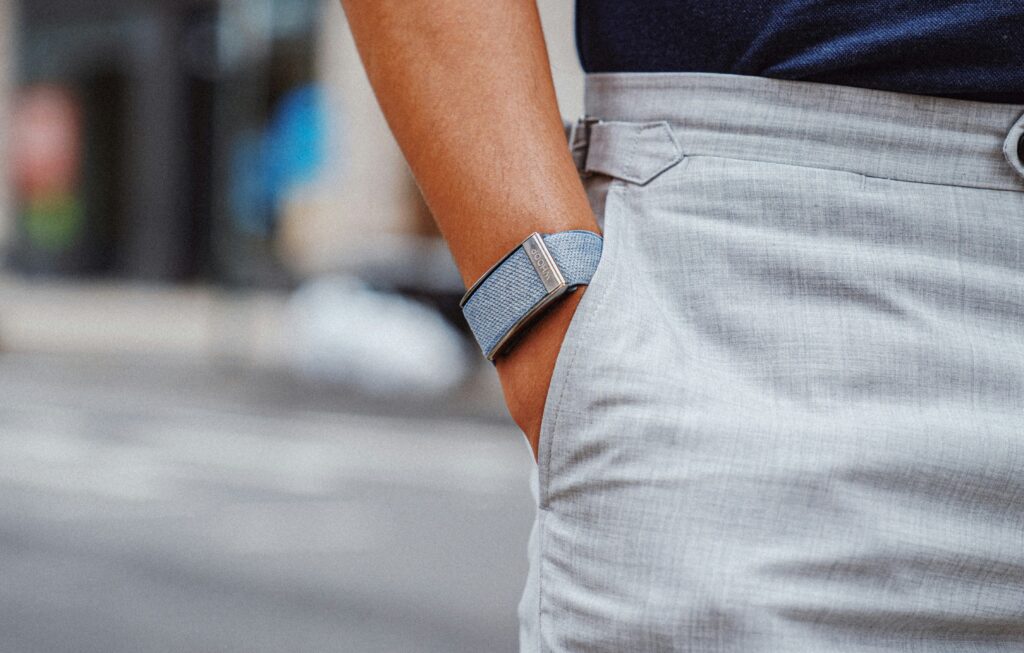Wearable technology is evolving beyond its origins as step counters and sleep monitors. It is quickly becoming central to personalized health, where data-driven insights empower consumers to make proactive health decisions. With the global wearable market projected to reach $187 billion by 2030, marketers have a unique opportunity to position their brands at the intersection of health, technology, and lifestyle.
But tapping into this space requires more than showcasing the latest gadgets; it demands a nuanced understanding of personalization, trust, and engagement.
Emphasize Proactive Well-Being
Consumers are shifting from passive health monitoring to expecting actionable, proactive insights from their wearables. This shift represents a critical opportunity for marketers to position wearables not just as fitness tools but as holistic health partners. For example, wearable devices now offer advanced features like blood oxygen monitoring, heart rate variability tracking, and even early signs of atrial fibrillation. Brands can emphasize how these features enable users to manage chronic conditions, detect early signs of health issues, or optimize well-being in real time.
Marketers should move beyond traditional health benefits and demonstrate how wearables help users “stay ahead” of their health. For instance, partnerships with healthcare providers or insurance companies can provide added credibility and demonstrate how wearables offer real-world health value beyond the gym.
Position Wearables as Lifestyle Enhancers
Millennials and Gen Z account for 60% of wearable tech revenue, and these generations view health as integral to their identity. For marketers, this means showcasing wearables not only as fitness devices but as indispensable lifestyle tools that help users achieve wellness goals. Campaigns should focus on “non-scale victories” such as improved mental clarity, better sleep quality, or reduced stress—all of which resonate deeply with health-conscious consumers.
Marketers can also draw parallels between wearable tech and other lifestyle must-haves, such as smart home devices or wellness subscriptions. Wearables like Whoop or Oura Ring, for example, have successfully positioned themselves as luxury wellness brands rather than mere fitness trackers. Campaigns can tap into aspirational messaging, where owning a wearable becomes synonymous with prioritizing self-care and mental health.
Leverage AI and Personalization to Drive Engagement
AI-driven personalization is a game-changer for wearables. Brands can harness data from wearables to offer hyper-personalized content, from tailored workout plans to sleep hygiene tips. Marketing campaigns can adapt in real-time, offering personalized push notifications, app content, or even curated health recommendations based on user behavior.
Imagine a wearable brand launching a campaign where users receive custom content aligned with their health goals, such as nutrition tips tailored to their activity levels or mindfulness exercises based on stress data collected by the device. By leveraging AI, brands can ensure that every touchpoint is highly relevant, fostering long-term loyalty and engagement.
The Dark Side of Wearables
While wearable technology offers immense potential to transform personal health and wellness, it is not without its pitfalls. The convenience of real-time health tracking comes with significant concerns that marketers must address to build consumer trust and foster long-term adoption. Below are some of the key risks associated with wearables that both users and marketers should consider:
Address Privacy Concerns to Build Trust
Wearables collect vast amounts of sensitive health data—heart rates, sleep patterns, and even early indicators of health conditions. However, unlike traditional healthcare data, wearable data often falls outside the scope of regulations like HIPAA. This raises concerns about who can access this information, how it is stored, and whether it is shared with third parties.
Data privacy remains a critical concern, with 41% of users worried about potential data breaches. For marketers, transparency is not a hurdle—it’s a differentiator. Brands should proactively communicate their data security practices and emphasize user control over personal data. Incorporating clear messaging around data privacy can build trust, particularly as wearables begin integrating more sensitive health metrics.
Over-Reliance and Health Anxiety
While wearables can motivate healthier habits, they can also fuel unhealthy preoccupations. Constant monitoring of metrics like heart rate, sleep quality, and calorie burn can lead to heightened health anxiety or even obsessive behavior. Some users may develop “data fatigue,” where their mood and decisions become overly dependent on minor fluctuations in metrics, ultimately causing more stress than relief.
Marketers need to be mindful of the messaging around these devices. Campaigns should promote balance and emphasize that wearable data is a tool, not a diagnosis, encouraging users to view it as part of a broader wellness journey rather than an ultimate arbiter of health.
Inaccuracy and Device Limitations
Not all wearables offer the same level of accuracy, especially those at lower price points. Discrepancies in heart rate monitoring, sleep tracking, and calorie estimates can erode user trust, especially if the data is used to inform health decisions. A survey found that 37% of users are concerned about inaccuracies in wearable data, which can lead to confusion and misguided health actions.
Marketers should highlight the strengths and limitations of their devices clearly and honestly. Collaborating with healthcare professionals to validate the accuracy of claims and developing content that educates users about the best practices for using wearable data can build credibility and trust.
Navigating the Path Forward
The next wave of wearable innovation will integrate even deeper into healthcare, transitioning from reactive health tools to proactive solutions that provide real-time interventions. Brands that position themselves as lifelong wellness partners—not just tech providers—will lead the market.
For marketers in the health and wellness space, wearables represent an opportunity to create deep, personalized connections with consumers. By focusing on personalization, trust, and engagement, brands can leverage wearable technology to deliver lasting value in a rapidly growing industry.
The future of wearables is not just about technology; it’s about creating meaningful, human-centered health experiences.
